Using run/debug configurations
DataGrip uses run/debug configurations to run, debug, and test your code. Each configuration is a named set of run/debug startup properties.
If the Navigation bar is visible (), you can access all available run configurations from the selector on the toolbar.
Run configurations can be created as:
Temporary– created every time you select from the context menu. To call the context menu, right-click an object or an area.
The maximum number of temporary configurations is 5. The older ones are automatically deleted when new ones are added.Permanent– created explicitly from a template or by saving a temporary configuration. Permanent configurations remain as part of your project until you remove them.
So whenever you run/debug or test your code, DataGrip either uses an existing permanent run/debug configuration or creates a new temporary one.
Permanent configurations have opaque icons while the icons of temporary configurations are semi-transparent.
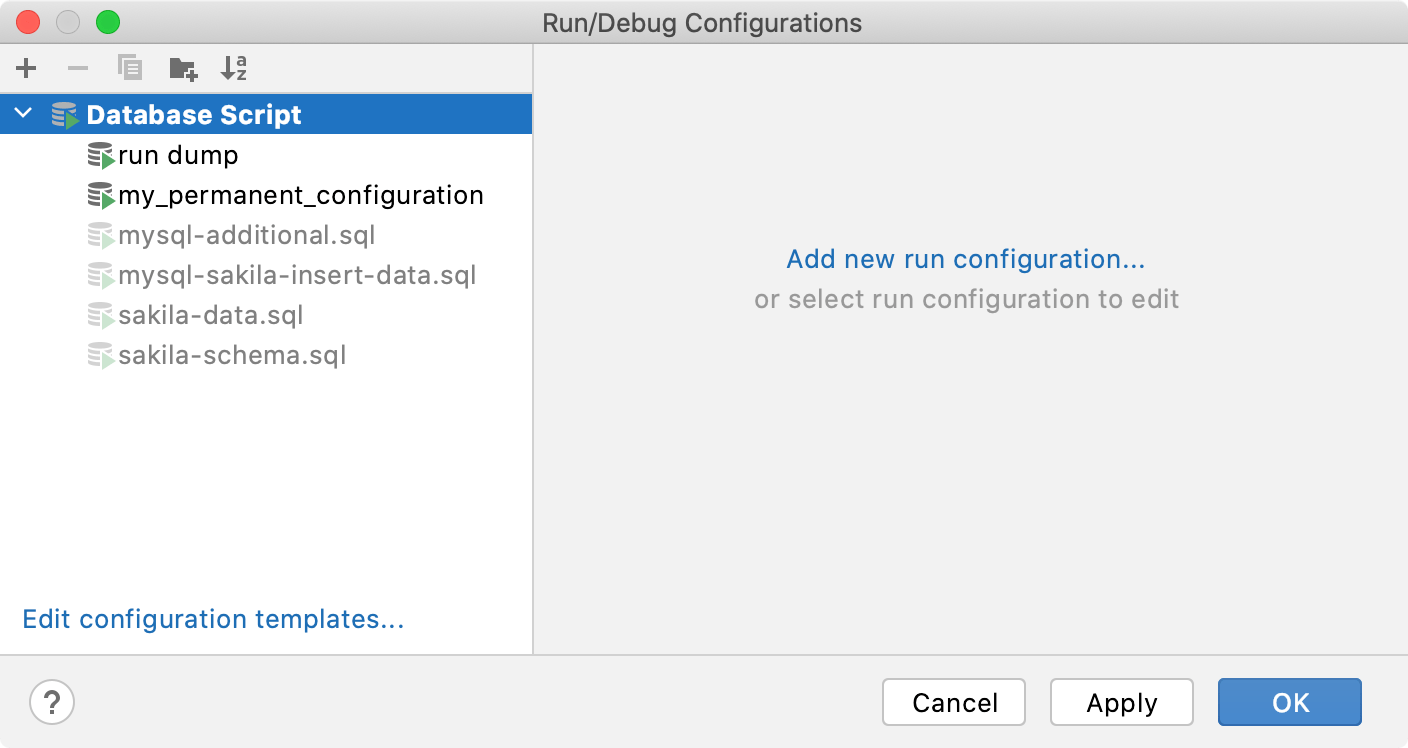
Create permanent run/debug configurations
DataGrip provides the following ways to create a permanent run/debug configuration:
Create from a template or copy an existing configuration.
Save a temporary configuration as permanent
Select a temporary configuration in the run configuration switcher and then click Save Configuration.
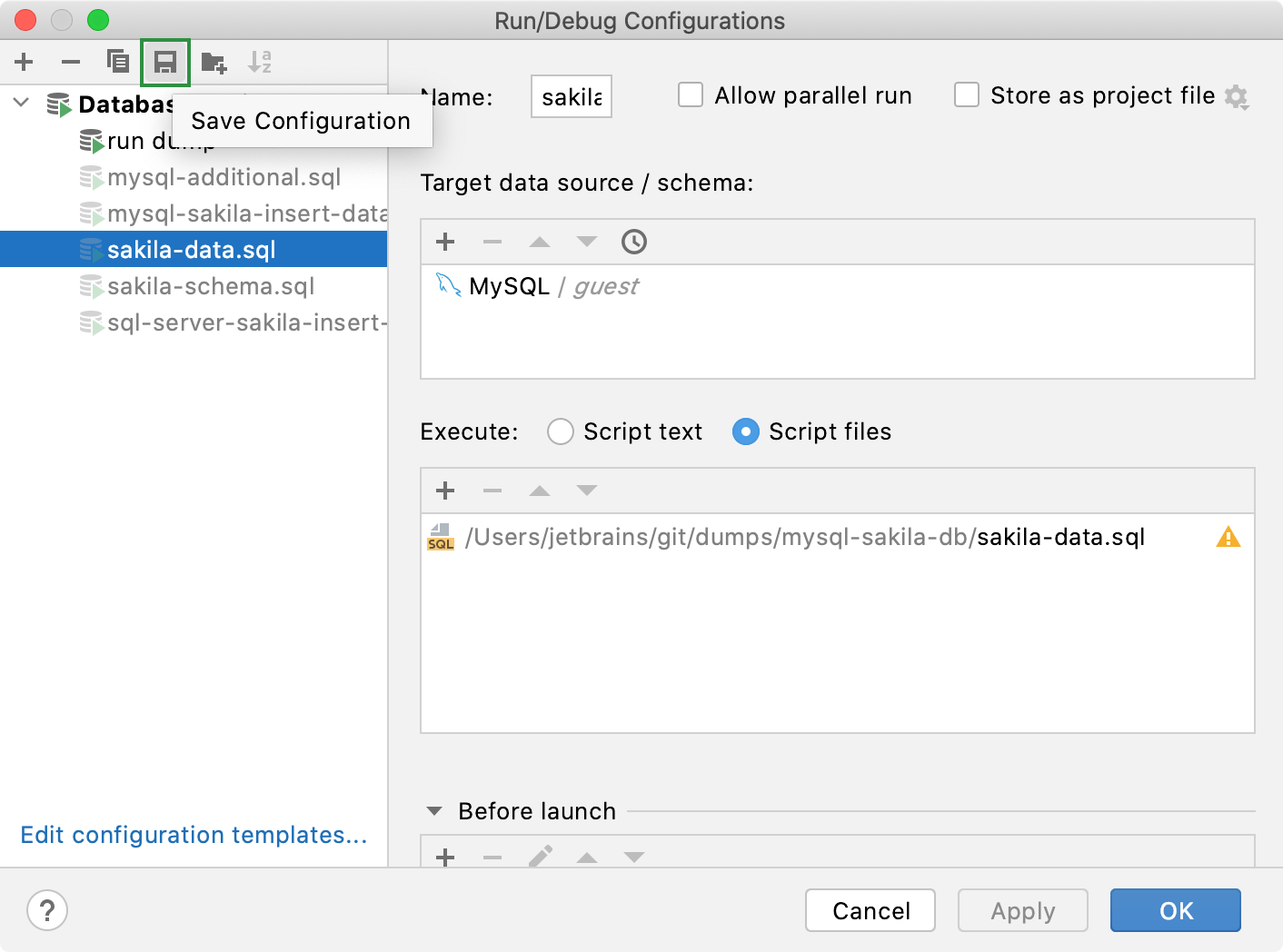
Alternatively, select a temporary configuration in the Run/debug configurations dialog and click
on the toolbar.
DataGrip provides run/debug configuration templates for different languages, tools, and frameworks. The list of available templates varies depending on the installed/bundled plugins.
Create a run/debug configuration from a template
Open the Run/Debug Configuration dialog in one of the following ways:
Select from the main menu.
With the Navigation bar visible (), choose from the run/debug configuration selector.
Click .
In the Run/Debug Configuration dialog, click the Add New Configuration icon (
) and select Database Script.
The fields that appear in the right-hand pane display the default settings for the selected configuration type.
Target data source / schema: databases or schemas against which you want to run your SQL code. This setting is dialect-dependent.
If you select a data source as a target, DataGrip displays a schema in which the script will be run. It is the default schema.
Script text: code that you want to run.
Script files: SQL files that you want to run. To add files, click the Add button (
) and navigate to files that you want to run. If a script contains schema switching, you will see a warning (
).
Data source (utPLSQL and tSQLt): a name of a data source. utPLSQL supports Oracle. tSQLt supports Microsoft SQL Server.
Database (tSQLt): a name of the Microsoft SQL Server database.
Paths (utPLSQL and tSQLt): a qualified path to the testing package.
Tags (utPLSQL): tags of tests that you want to run. Use semicolon (
;) as separator.
Select Allow parallel run if you want to allow multiple instances of the configuration to run at the same time.
In the Before launch section, define whether you want to perform any specific actions before launching the application, for example, launch an external tool.
Apply the changes and close the dialog.
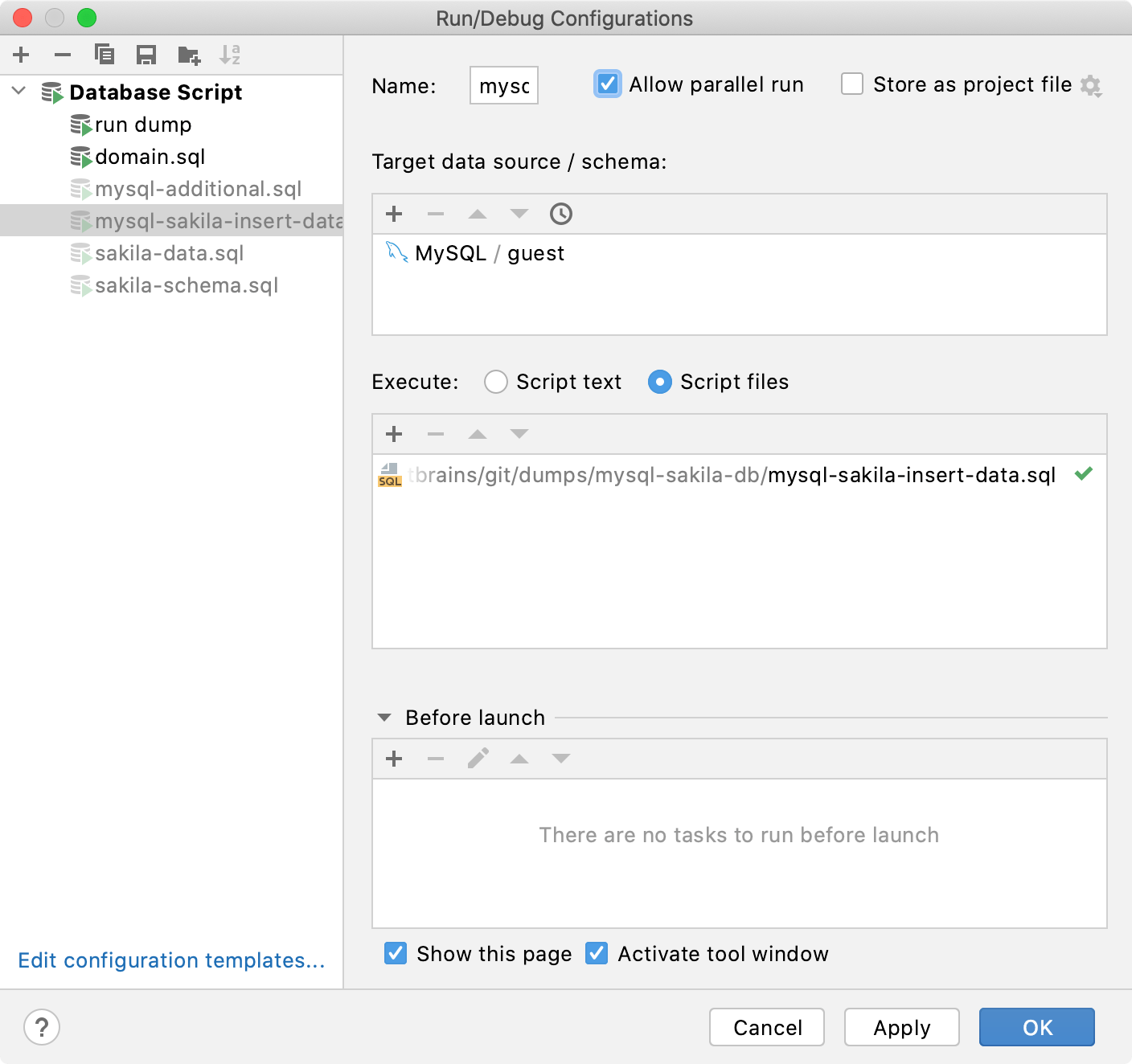
Share run/debug configurations
If you are working in a team, you might want to share your run configurations so that your teammates could run the application using the same configuration or enable them to remotely attach to the process you are running.
For these purposes, DataGrip provides a mechanism to store your run configurations as project files and share them through VCS. The same mechanism can also be used when you want to send your configuration as a file to someone else. This saves a lot of time as run configurations sometimes get sophisticated, and keeping them in sync manually would be tedious and error-prone.
From the main menu, select . Alternatively, press Alt+Shift+F10, then 0.
Select the run configuration you want to share, enable the Store as project file option, and specify the location where the configuration file will be stored.
If compatibility with DataGrip 2019.3 and earlier is required, store the file in the default location.

(Optional) If the .idea directory is added to VCS ignored files, the .idea/runConfigurations subfolder will be ignored, too. If you use Git for your project, you can share .idea/runConfigurations only and leave .idea ignored by modifying .gitignore as follows:
/.idea/* !/.idea/runConfigurations
Run/debug configuration templates
Each type of run configuration is a template that you can edit, so the next time you create a new configuration of that type, its parameters already have the desired values.
Configure the default values for a template
From the main menu, select . Alternatively, press Alt+Shift+F10, then 0.
In the left-hand pane of the run configuration dialog, click Edit configuration templates.
In the Run/Debug Configuration Templates dialog that opens, select a configuration type.
Specify the desired default parameters and click OK to save the template.
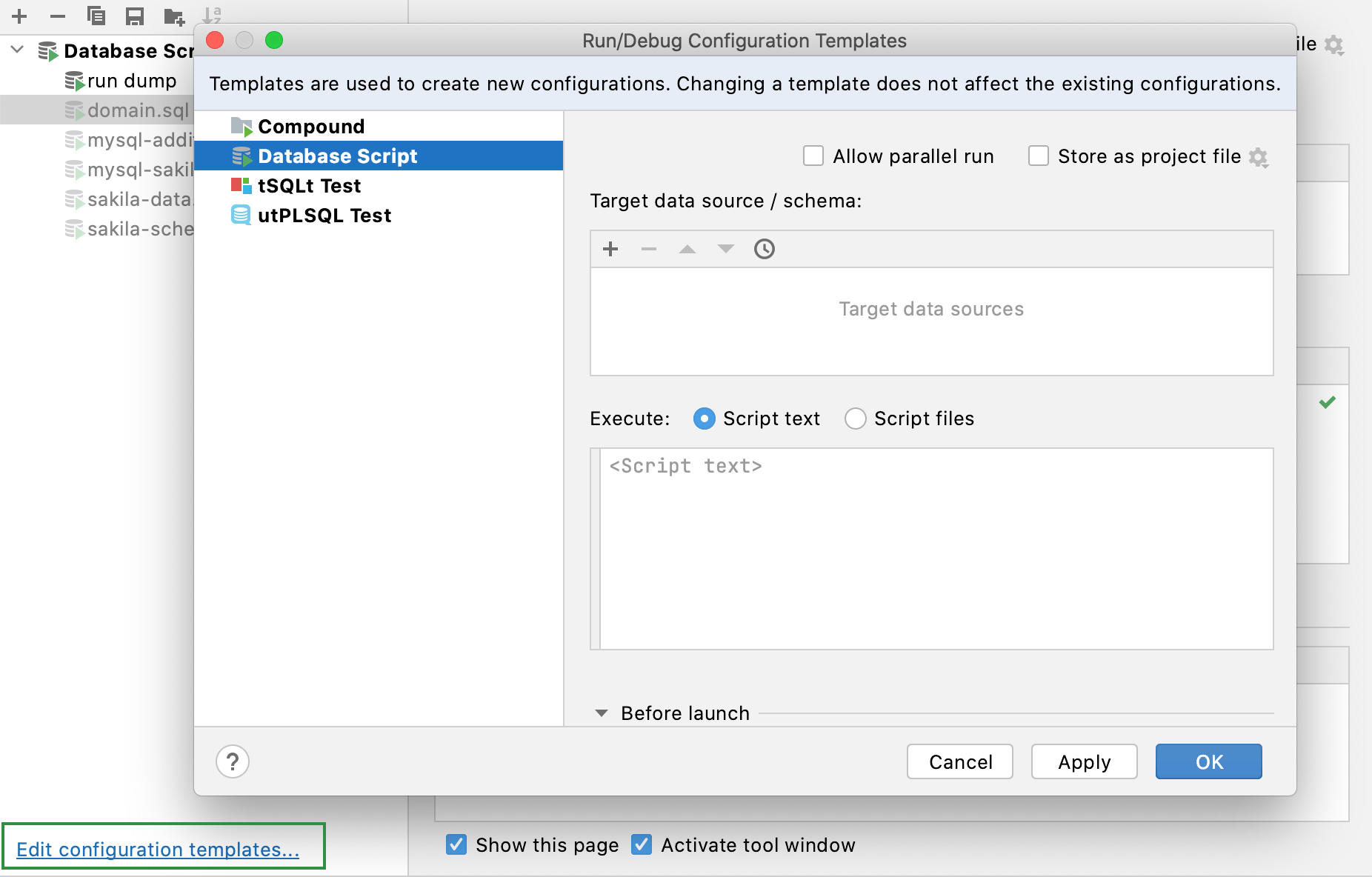
Compound run/debug configurations
Suppose you would like to launch multiple run configurations simultaneously. For example, you may want to run scripts that create a schema, then run a statement on that schema, and finally run some tests. You can configure this behavior with a compound run configuration.
When you run or debug your code using a compound configuration, you actually launch a sequence of configurations in the order they are listed.
Create a compound run configuration
From the main menu, select . Alternatively, press Alt+Shift+F10, then 0.
In the Run/Debug Configurations dialog, click
or press Alt+Insert, then select Compound.
Specify the run/debug configuration name in the Name field. This name will be shown in the list of the available run/debug configurations.
Select Store as project file to make this run configuration available to other team members.
To include a new run configuration into the compound configuration, click Add
and select the desired one from the list.
Apply the changes.
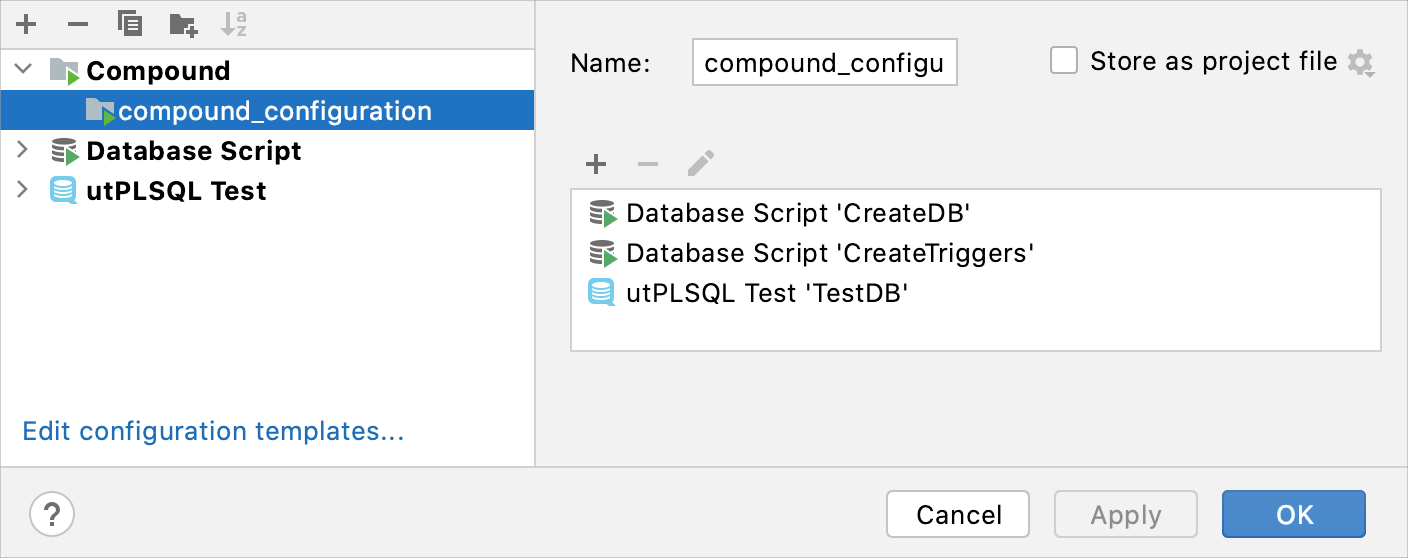
Run/debug configuration folders
When there are many run configurations of the same type, you can group them in folders so they become easier to distinguish visually.
Once grouped, the run configurations appear in the list under the corresponding folders.
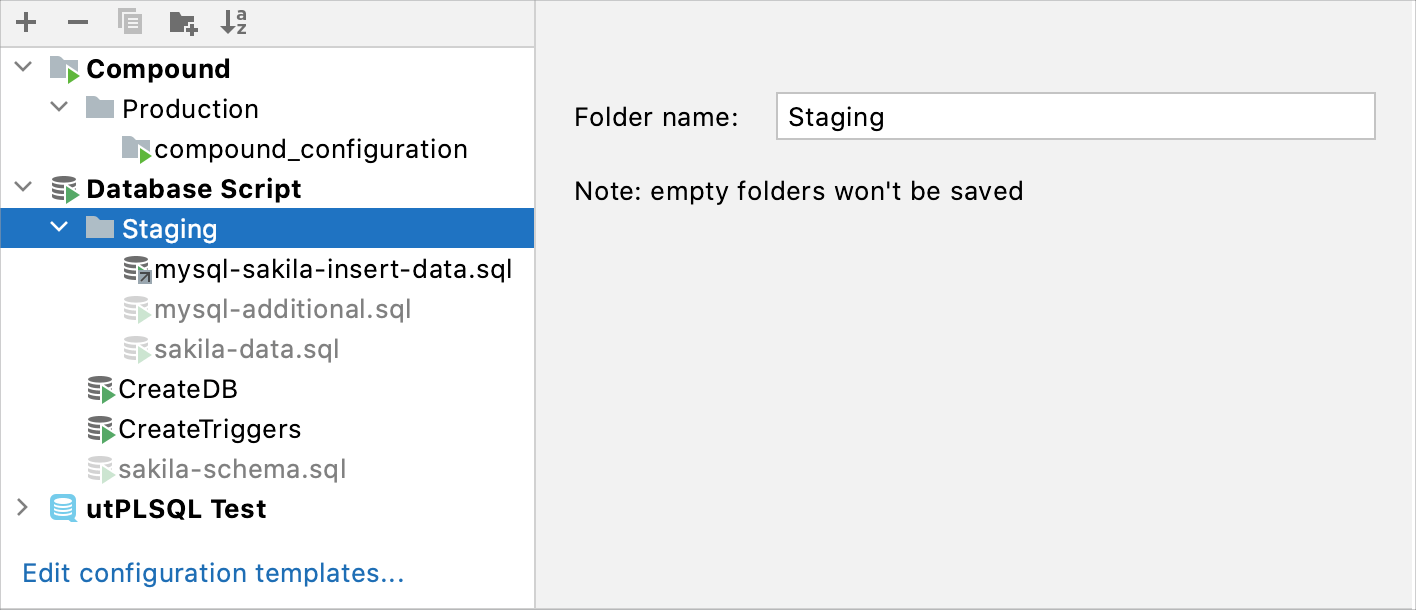
Create a folder for run configurations
From the main menu, select . Alternatively, press Alt+Shift+F10, then 0.
In the Run/Debug Configurations dialog, select a configuration type and click
on the toolbar. A new empty folder for the selected type is created.
Specify the folder name in the text field to the right or accept the default name.
Select the desired run configurations and move them under the target folder.
Apply the changes. If a folder is empty, it will not be saved.
When you no longer need a folder, you can delete it Delete. The run configurations grouped under this folder will be moved under the root of the corresponding run configuration type.